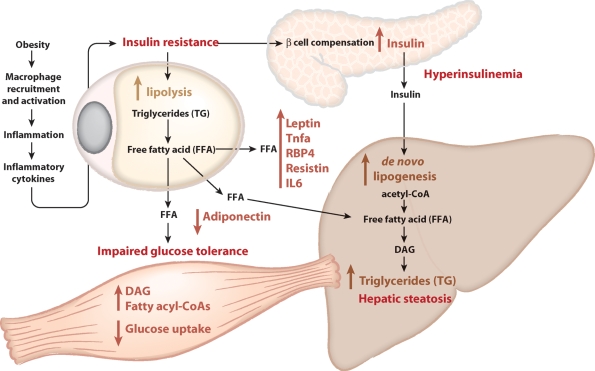Fig. 1.
Three links between adipocyte biology and metabolic syndrome. Obesity leads to the recruitment by adipocytes of macrophages. These macrophages are activated to produce inflammatory cytokines, which blunt insulin signaling. In adipocytes, insulin resistance leads to an impaired ability of insulin to suppress lipolysis, leading to an increased flux of free fatty acids from adipocytes to other tissues. In muscle, increased fatty acid flux leads to impaired glucose uptake, leading to whole-body impaired glucose tolerance. In the liver, the increased flux of free fatty acid contributes to increased triglyceride synthesis and hepatic steatosis. Insulin resistance causes pancreatic β-cells to compensate with increased insulin production, leading to hyperinsulinemia. This in turn stimulates de novo lipogenesis in the liver, contributing to the pool of free fatty acids available for triglyceride production. Obesity also alters the balance of adipokines produced by adipocytes, with an increase in leptin, TNFα, RBP4, resistin, and IL6, and a decrease in adiponectin. This altered balance contributes to impaired glucose tolerance and insulin resistance.

